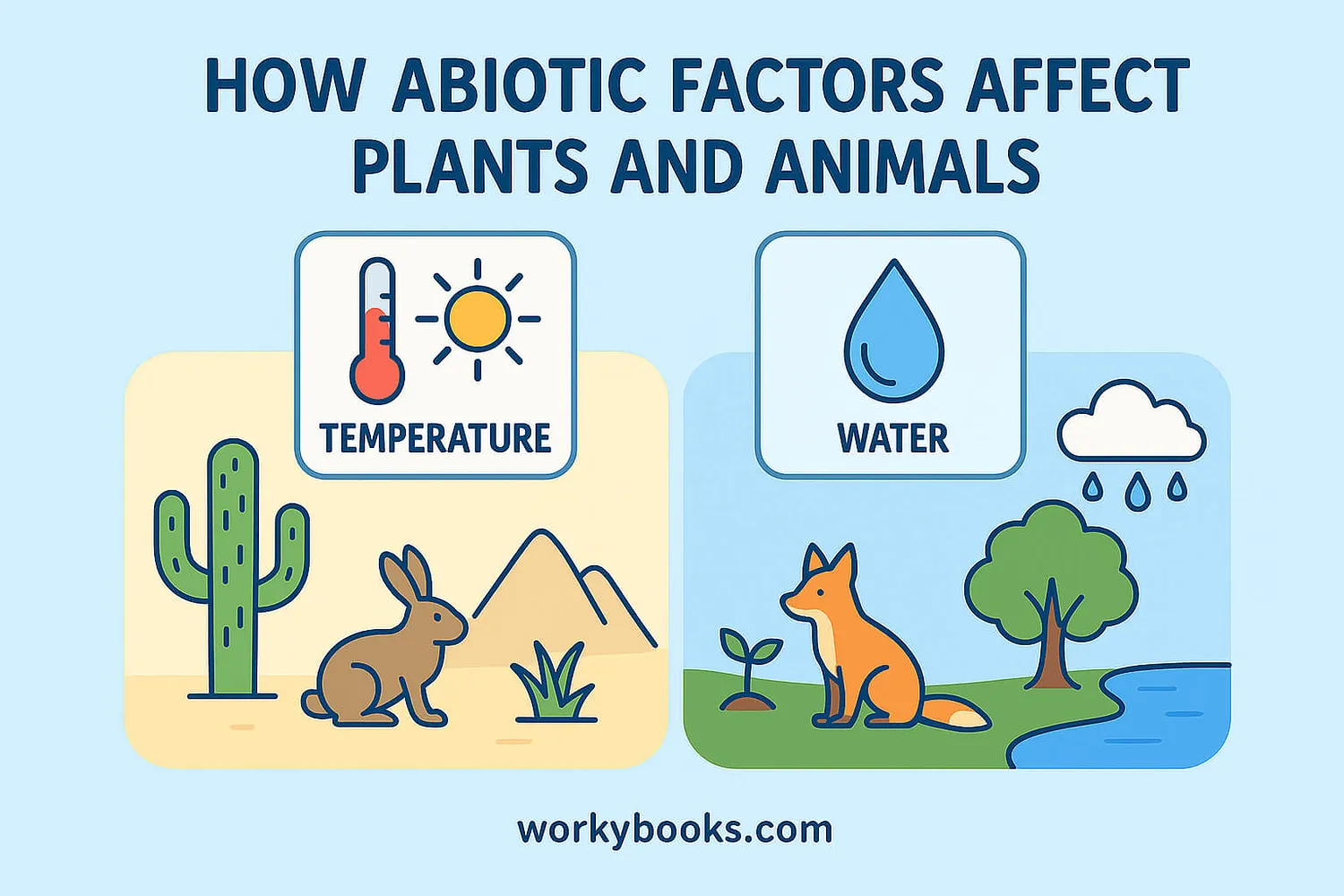Abiotic Factors - Definition, Examples, Facts & Quiz, FAQ, Trivia
Discover how non-living elements shape ecosystems and affect living organisms
What Are Abiotic Factors?

Abiotic factors are the non-living parts of an ecosystem that affect living organisms. They include elements like sunlight, temperature, water, soil, and air. These factors determine what types of plants and animals can survive in a particular environment.
Key facts about abiotic factors:
• They are physical and chemical components of the environment
• They influence how organisms grow, behave, and survive
• Examples include sunlight, water, temperature, soil, rocks, and air
Think of abiotic factors as the "stage" where living organisms (biotic factors) perform. Without the right abiotic conditions, life couldn't exist!
Key Concept
Abiotic factors are non-living components of the environment that influence living organisms and ecosystems. They help determine which species can survive in a particular habitat.
Types of Abiotic Factors

Abiotic factors can be grouped into several categories. Each type plays a different role in ecosystems:
Climate Factors
- Sunlight: Energy source for photosynthesis
- Temperature: Affects organism metabolism
- Precipitation: Rain, snow, and other moisture
- Wind: Affects plant growth and erosion
- Humidity: Amount of water vapor in air
Water Factors
- Availability: Amount of water in environment
- Salinity: Salt content in water
- pH Level: Acidity or alkalinity of water
- Oxygen: Dissolved oxygen in water
- Currents: Movement of water
Soil Factors
- Soil Type: Sand, silt, clay, loam
- pH Level: Acidity or alkalinity of soil
- Nutrients: Minerals available to plants
- Texture: Affects water retention
- Composition: Organic matter content
Topographic Factors
- Altitude: Height above sea level
- Slope: Steepness of land
- Aspect: Direction a slope faces
- Landforms: Mountains, valleys, plains
- Geology: Underlying rock types
Abiotic Factors in Ecosystems

Abiotic factors play a crucial role in shaping ecosystems and determining which organisms can survive in different environments. They affect living organisms in many ways:
How abiotic factors influence ecosystems:
• Temperature: Determines what species can survive in an area. For example, polar bears need cold climates while cacti thrive in hot deserts.
• Water: Availability of water is essential for all living things. Desert plants have special adaptations to conserve water.
• Sunlight: Plants need sunlight for photosynthesis. In dense forests, plants compete for sunlight.
• Soil: Different plants require different soil types. Some plants grow best in sandy soil, others in clay.
Abiotic factors also interact with each other. For example, temperature affects humidity, and soil type affects water drainage.
Ecosystem Balance
Changes in abiotic factors can disrupt entire ecosystems. A drought (lack of water) can cause plants to die, which affects herbivores, and then carnivores. This is called a food chain disruption.
Abiotic Factors Quiz
Test your knowledge of abiotic factors with this 5-question quiz. Choose the correct answer for each question.
Frequently Asked Questions
Here are answers to common questions about abiotic factors:
Science Trivia
Discover amazing facts about abiotic factors:
Extreme Temperatures
The hottest recorded temperature on Earth was 134°F (56.7°C) in Death Valley, California. The coldest was -128.6°F (-89.2°C) in Antarctica. These abiotic extremes create unique ecosystems with specially adapted organisms.
Water World
About 71% of Earth's surface is covered by water, making it the most abundant abiotic factor. However, only 2.5% of that water is freshwater, and less than 1% is easily accessible for living organisms.
Soil Secrets
A single tablespoon of healthy soil contains more microorganisms than there are people on Earth! Soil is considered an abiotic factor, but it's teeming with biotic life that helps decompose organic matter and recycle nutrients.
Sunlight Power
It takes sunlight about 8 minutes to travel from the Sun to Earth. Plants use just 1-2% of this solar energy for photosynthesis, but that small percentage powers nearly all life on our planet!


